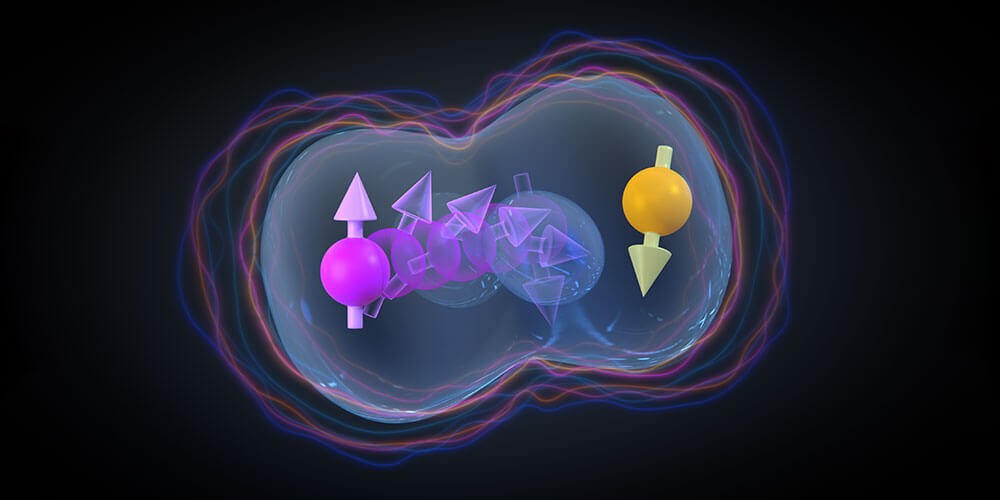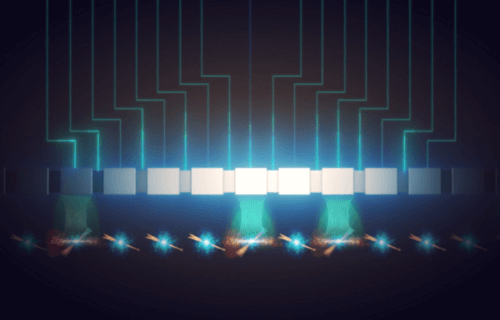BASEL, Switzerland — A reliable and ultra-powerful quantum computer could finally be on the horizon. Researchers from the University of Basel and the NCCR SPIN in Switzerland have made an exciting advancement in the world of quantum computing, achieving the first controllable interaction between two “hole spin qubits” inside a standard silicon transistor. This leap forward could eventually allow quantum computer chips to carry millions of qubits — a feat that would drastically scale up their processing power and potentially replace the modern computer.
First, we need to explain some of the high-tech terms involved in the new study published in Nature Physics. A qubit is the quantum equivalent of a bit, the fundamental building block of data in conventional computing. While a standard bit can be either a 0 or a 1, qubits can be both simultaneously, thanks to the principles of quantum mechanics. This allows quantum computers to handle complex calculations at speeds today’s standard computers will never achieve.
The concept of hole spin qubits might sound even more abstract. In simple terms, in the materials used for making computer chips, electrons (tiny particles with negative charge) move around, and sometimes they leave behind empty spaces or “holes.”
Though these holes are not actual particles, they behave as if they were positively charged electrons. Researchers can manipulate the “spin” (a kind of intrinsic angular momentum) of these holes to represent data. The ability to use these spins in computing is what scientists are harnessing here, and importantly, the control of these spins is achievable electrically, simplifying the design and scalability of quantum chips.
In traditional and quantum computing alike, interaction among bits — or qubits — is crucial. This is what allows any computing device to perform operations and solve problems. What the Basel team has accomplished is creating a controlled interaction between two hole spin qubits, enabling them to influence each other’s states through a process known as a spin-flip. This interaction is a foundational requirement for building more complex quantum circuits that can perform light-speed computations.

Why is this important? Current quantum computers have a limited number of qubits, and this limitation restricts them to calculations that could, frankly, be done more efficiently by conventional computers. By figuring out how to effectively and reliably link many qubits together — potentially millions on a single chip — quantum computers will leap past today’s machines, tackling problems that are currently unsolvable in areas like drug discovery, materials science, and cryptography.
The method developed by Dr. Andreas Kuhlmann and his team involves using something called “FinFETs” — a type of transistor already used in modern smartphones. This choice is strategic because FinFETs are already produced with mature technology, making scaling up production to create quantum chips becomes much more feasible.
An additional intriguing aspect of their research is the use of what’s known as “exchange interaction.” This is the force that allows the hole spins to interact, and it’s governed by the principles of electrostatics — the same kind of basic electrical interactions that make your hair stand up when you rub a balloon on your head. In the case of hole spins, this interaction is not only electrically controllable but also anisotropic, meaning it varies depending on the direction of the spin orientation, which adds a layer of complexity and control to how these qubits operate.
So, what does all this mean? With continued research and development, the dream of a quantum computer capable of exceeding the boundaries of current computing technology grows ever closer. This work brings us one step further to harnessing the full promise of quantum information science, opening up new possibilities for what computers might one day be able to accomplish.
“The anisotropy makes two-qubit gates possible without the usual trade-off between speed and fidelity,” Dr. Kuhlmann says in a media release. “Qubits based on hole spins not only leverage the tried-and-tested fabrication of silicon chips, they are also highly scalable and have proven to be fast and robust in experiments. This principle now also makes it possible to couple a larger number of qubit pairs.”
StudyFinds Editor Chris Melore contributed to this report.
